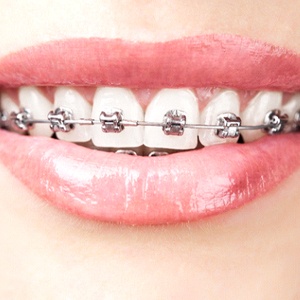Comprehensive Guide to Orthodontics Procedures for Correcting Dental Misalignments
In the realm of orthodontics, the journey to attaining a perfectly lined up smile involves a myriad of treatments customized to correct oral imbalances. From standard dental braces to undetectable aligners and also surgical alternatives, the area of orthodontics uses a variety of services to attend to differing levels of oral irregularities. Recognizing the complexities of each treatment, including their devices, advantages, and prospective drawbacks, is vital in making notified decisions regarding one's orthodontic treatment. As we browse through the comprehensive overview to orthodontic treatments for remedying oral imbalances, the detailed details of each technique will certainly unfold, clarifying the course toward a functional and unified oral positioning.
Orthodontic Procedures Overview

Regular changes and surveillance are critical parts of orthodontic therapy to guarantee development is on track and to make any essential modifications along the means. By undertaking orthodontic treatments, patients can not only attain a straighter smile yet likewise enhance their total oral wellness and function.
Typical Dental Braces: How They Work
When thinking about orthodontic treatments for oral imbalances, traditional braces stand out as a tried and true method for remedying teeth placing. Traditional dental braces are composed of braces, wires, and bands that work together to use continual stress on the teeth, gradually relocating them into the desired alignment.
As pressure is applied to the teeth through the dental braces, the bone bordering the teeth is improved to support the new tooth positions. Individuals will certainly need routine adjustments at the orthodontist's office to ensure the dental braces proceed to use the right stress for efficient teeth motion.
Unseen Aligners: Benefits And Drawbacks
Undetectable aligners use a hassle-free and discreet choice to typical dental braces for remedying dental imbalances. These clear, tailor-made trays are practically undetectable when used, making them an appealing option for individuals looking for a much more visually pleasing orthodontic therapy. One of the key benefits of undetectable aligners is their removability, permitting for easier maintenance of oral health compared to traditional dental braces. Patients can eliminate the aligners before consuming or brushing their teeth, lowering the danger of food obtaining stuck in the home appliance and simplifying the cleansing procedure.

Surgical Orthodontic Options
Surgical treatments in orthodontics present sensible alternatives for resolving complex dental imbalances that may not be efficiently fixed through traditional orthodontic treatments. While unnoticeable aligners and typical dental braces can remedy several orthodontic concerns, particular instances require surgical intervention to accomplish optimal outcomes. Surgical orthodontic options are usually suggested for severe malocclusions, substantial jaw discrepancies, and instances where the underlying bone structure requires adjustment to achieve appropriate alignment.
One common surgical orthodontic treatment is orthognathic surgery, which entails rearranging the jaws to correct practical issues such as problem speaking or chewing. This surgery is usually carried out in partnership with an orthodontist that assists straighten the teeth prior to and after the procedure. Surgical orthodontics may likewise include procedures to reveal affected teeth, remove excess periodontal tissue, or reshape the jawbone to develop an extra harmonious facial profile.
Before thinking about medical orthodontic options, clients undertake a comprehensive assessment to establish the necessity and prospective advantages of such interventions. braces. While surgical treatment might seem challenging, it can considerably enhance both the feature and aesthetic appeals of the smile in instances additional info where traditional orthodontic treatments fall short
Retainers and Post-Treatment Care

Post-treatment care includes following the orthodontist's guidelines diligently. This may include proper dental health techniques, going to follow-up visits, and putting on the retainers as prescribed. Failure to conform with post-treatment care instructions can cause regression, where the teeth slowly relocate back in the direction of their original settings. Consistent retainer wear, great dental health, and normal dental exams are important for maintaining the results accomplished via orthodontic surgical treatment and ensuring the long-term stability of the dealt with oral alignment.
Final Thought
To conclude, orthodontic procedures supply different choices for fixing dental imbalances. Standard braces utilize metal brackets and cables to shift teeth into correct placement. Undetectable aligners offer an even more very discreet alternative but may not be appropriate for all situations. Surgical orthodontic alternatives are readily available for more serious imbalances. Retainers are typically made use of post-treatment to maintain the brand-new alignment. Generally, orthodontic procedures can properly improve oral health and wellness and aesthetic appearance.
As we navigate via the comprehensive guide to orthodontic treatments for remedying oral imbalances, the intricate details of each method will certainly unravel, dropping light on the path towards a unified and functional dental positioning. - braces
One of the most common orthodontic treatments is the usage of braces, which are composed of steel braces and best site cables that apply mild pressure to progressively move teeth right into the wanted position.When taking into consideration orthodontic therapies for dental imbalances, conventional dental braces stand out as a tried and true technique for remedying teeth positioning. Additionally, unnoticeable aligners may not be suitable for intricate orthodontic issues that require even more considerable teeth motion, as they are normally recommended for light to modest instances. Retainers are custom-made orthodontic gadgets developed to hold teeth in their corrected placements after the conclusion of orthodontic treatment.